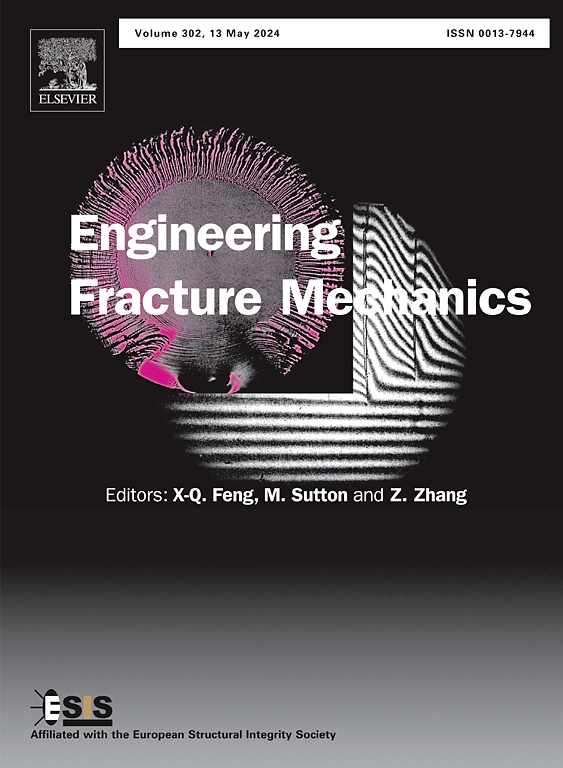Creep-fatigue damage model considering transition strain rate of stress relaxation stage and its application on life prediction of Inconel625 diffusion bonded joint
IF 4.7
2区 工程技术
Q1 MECHANICS
引用次数: 0
Abstract
In present paper, creep-fatigue fracture behavior of Inconel625 diffusion bonded joint is investigated. Subsequently, the creep-fatigue damage model based on strain energy exhaustion theory is modified by taking transition strain rate of stress relaxation stage into account. Finally, creep-fatigue life of the joint is predicted. The results indicate that the crack fracture mode is transgranular dominated, all creep-fatigue lives predicted by the modified model fall within an error margin of 1.5 times. The creep damage is comparable to the fatigue damage when holding time is less than 60 s. However, when holding time exceeds 120 s, the creep damage is significantly greater than the fatigue damage. The cycle by cycle concept provides more accurate life prediction compared to that predicted by constitutive model. When the strain range is within ± 0.3 % and the holding time does not exceed 60 s, the joint exhibits a lifespan of exceeding 1000 cycles. Conversely, all predicted lifetimes are less than 260 cycles when the strain range exceeds ± 0.3 % or the holding time surpasses 60 s. Therefore, further improvement of the creep-fatigue strength for Inconel 625 diffusion bonded joint is necessary.
考虑应力松弛阶段过渡应变速率的蠕变疲劳损伤模型及其在Inconel625扩散焊接头寿命预测中的应用
本文研究了Inconel625扩散连接接头的蠕变疲劳断裂行为。随后,考虑应力松弛阶段的过渡应变率,对基于应变能耗尽理论的蠕变疲劳损伤模型进行了修正。最后,对接头的蠕变疲劳寿命进行了预测。结果表明,裂纹断裂模式以穿晶为主,修正模型预测的蠕变疲劳寿命误差在1.5倍以内。保温时间小于60s时,蠕变损伤与疲劳损伤相当。当保温时间超过120s时,蠕变损伤明显大于疲劳损伤。与本构模型相比,循环周期概念提供了更准确的寿命预测。当应变范围为±0.3%,保温时间不超过60 s时,接头的使用寿命可达1000次以上。相反,当应变范围超过±0.3%或保持时间超过60 s时,所有预测寿命都小于260次。因此,进一步提高Inconel 625扩散连接接头的蠕变疲劳强度是必要的。
本文章由计算机程序翻译,如有差异,请以英文原文为准。
求助全文
约1分钟内获得全文
求助全文
来源期刊
CiteScore
8.70
自引率
13.00%
发文量
606
审稿时长
74 days
期刊介绍:
EFM covers a broad range of topics in fracture mechanics to be of interest and use to both researchers and practitioners. Contributions are welcome which address the fracture behavior of conventional engineering material systems as well as newly emerging material systems. Contributions on developments in the areas of mechanics and materials science strongly related to fracture mechanics are also welcome. Papers on fatigue are welcome if they treat the fatigue process using the methods of fracture mechanics.

 求助内容:
求助内容: 应助结果提醒方式:
应助结果提醒方式:


